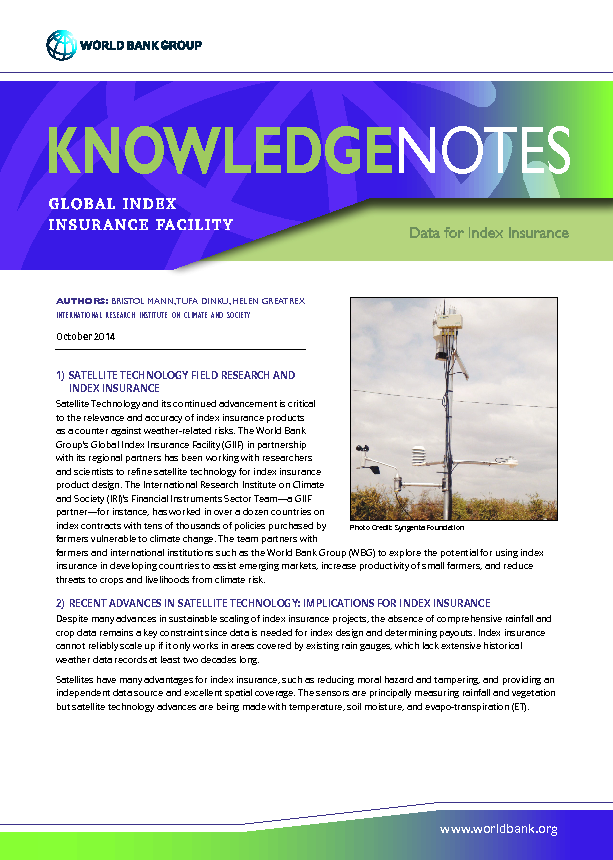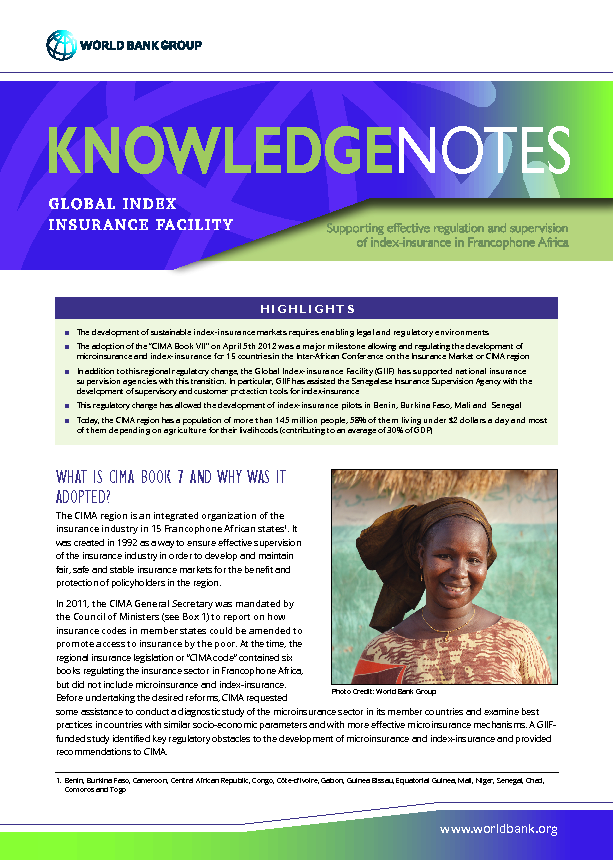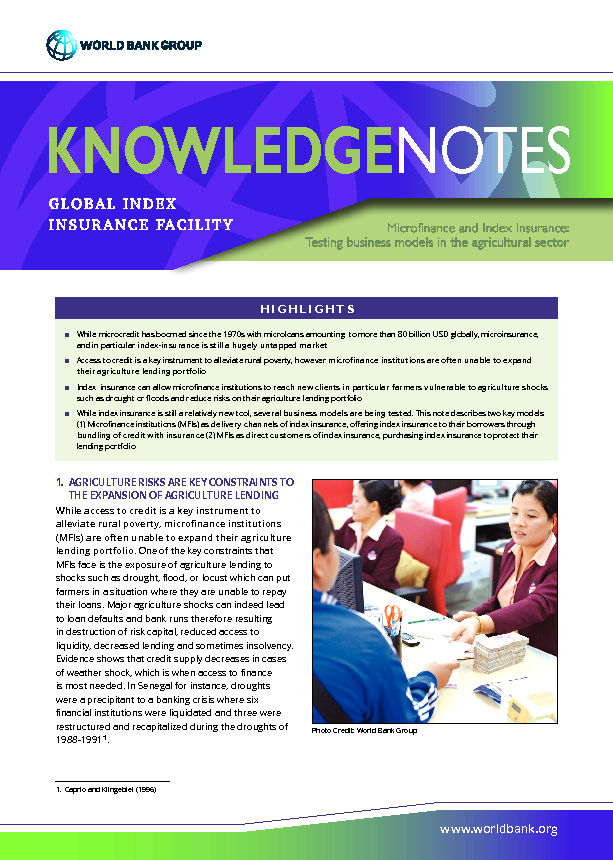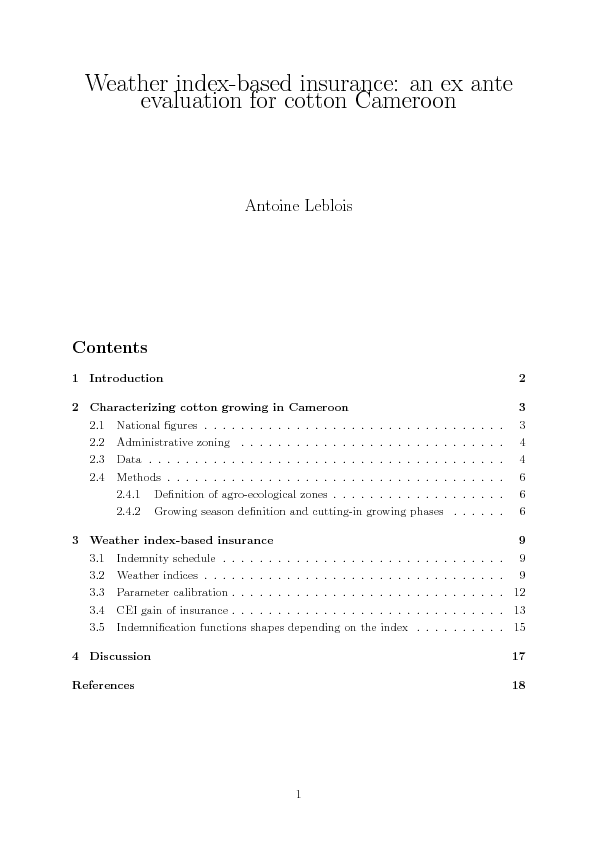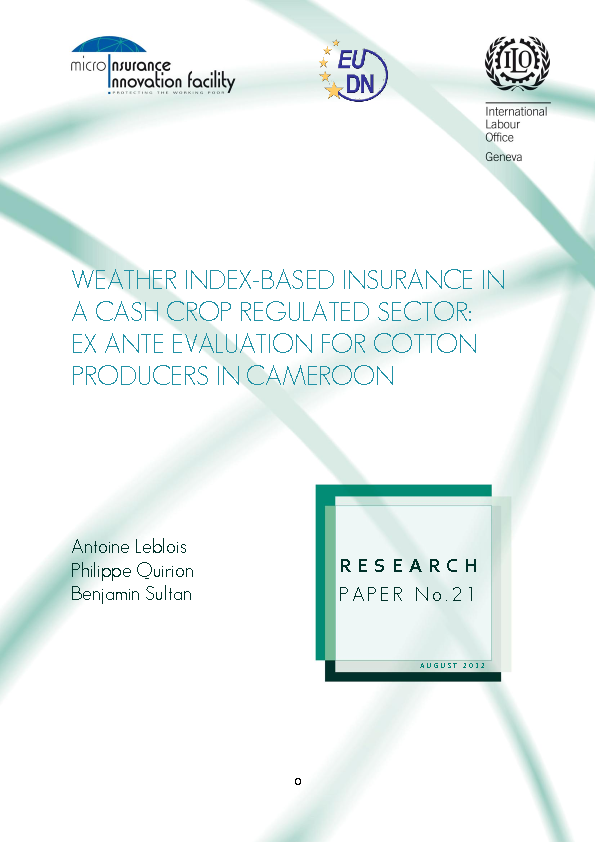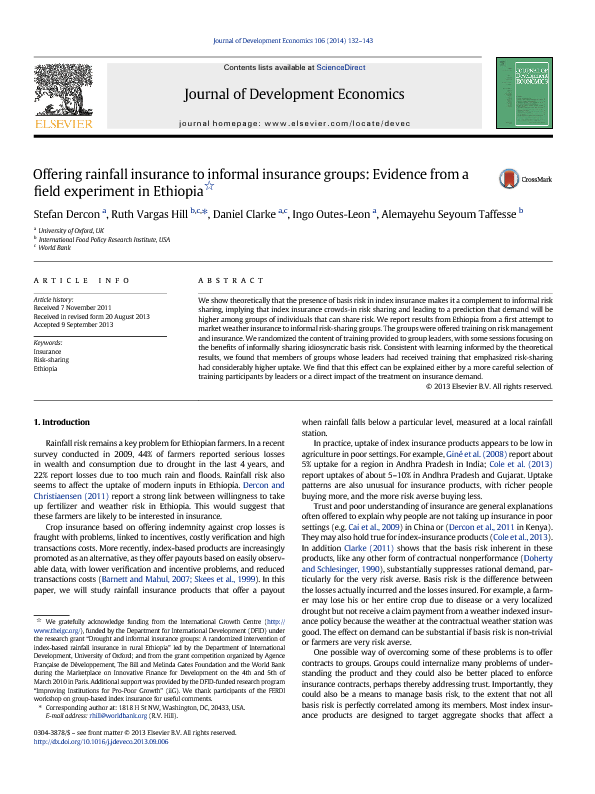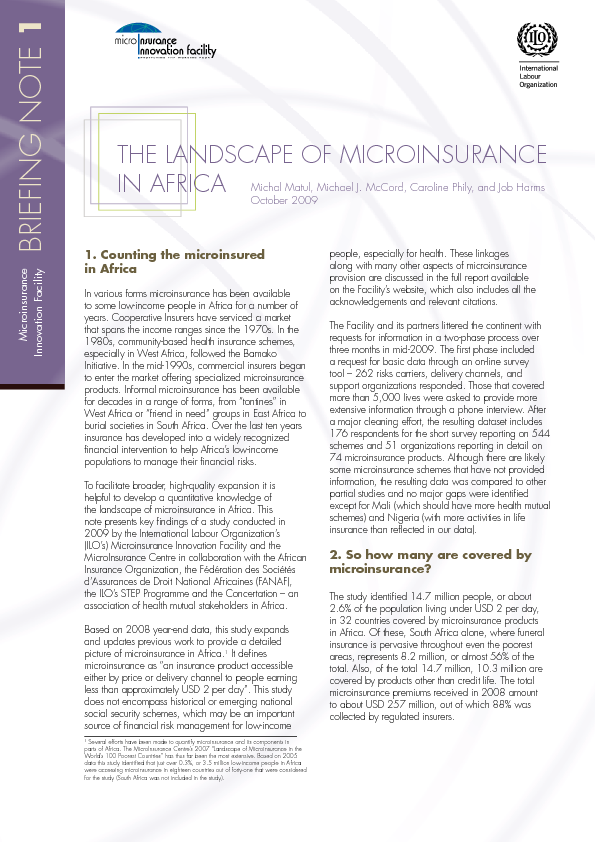Content owner:
Language:
English
ILO's Impact Insurance Facility , in partnership with WBG's Global Index Insurance Facility, USAID, and Basis/I4-supported Global Action Network , hosted a webinar on index insurance that touches upon the variety of interventions such as provision, administration and management of subsidies, support for developing infrastructure for effective implementation of insurance programmes, investment in collection, and sharing of data and consumer education. In addition, the government's role in developing enabling regulations and using insurance as a part of their social protection and agriculture...

